










The ultimate boss is changing and challenging us each day. They want to know where the food comes from, what it contains and where it is produced. They have demands for packaging and animal welfare, and want us to ensure basic human rights and decent working conditions in our supply chains. In addition, they are concerned with the environment and climate.
And they challenge us for a good reason. According to the UN, food production accounts for 30 percent of the global greenhouse gas emissions, and it puts a strain on natural resources such as water, rainforest, land and sea. If one looks at the UN’s sustainability goals, the vast majority of these are related to how we produce, transport and consume food. REMA 1000 is without a doubt part of a sector that is the core of many of the challenges facing the world. Fortunately, this means that we can be part of the solution.
The core of our ethical work is the goods that we produce and sell. Central to this is the development of sustainable value chains that can withstand the future requirements and challenges. Our supply chain is global, complex as well as exposed to climate change. Challenges related to child labour, corruption, forced labour and environmental damage are big in our sector and with the consequences of climate change they will not become smaller in the years ahead. It requires that we work well in our own supply chain and demands the same from our suppliers. The authorities place greater demands on companies’ work with social and environmental challenges in the supply chain, including through the Transparency Act. We continuously work to further develop our work within responsibility so that we can handle new challenges and stay ahead of regulatory requirements.
This guide explains how we work with ethical and sustainable production and purchasing in REMA 1000. Furthermore, what requirements we set in our framework agreement and how we follow up our suppliers. You can also read about our goals within the environment and health. Other relevant documents you should familiarize yourself with are our ethical guidelines (SCoC) for suppliers, our risk assessment of countries and primary commodities and our framework agreement.
We hope that this guide will be helpful for you in your workday. If you have any questions or comments, please contact us.
Christina Fuglesang Head of Responsible Sourcing
Emilie Våge Head of Social Responsibility and Sustainability

We are far from perfect. We sell products that are not always environmentally friendly. We have picked up marching speed, but are still only in the starting pit. Achieving a more sustainable world is an ongoing effort that cannot be accomplished in a single day, and changes require that we all go in the same direction. REMA 1000’s ambition will always be to do more than what is expected from us.

In REMA 1000, we define social responsibility as our work with the environment, people, health and responsible trade. We must maintain high business ethics and strive for fair and responsible value chains from farm to fork. Through close cooperation with our suppliers, our ambition is to help reduce negative impact and create positive ripple effects. We make high demands on ourselves and others, and we have a close dialogue with suppliers and follow up on challenges and deviations in the value chain.

By 2030 we will be climate neutral and have a positive impact on nature.
Our promises
• No food waste
• Climate neutral and renewable
Our ambition is to do more than what is expected of us, and we will cut emissions and other negative impacts faster than what we are required to. That is why corporate social responsibility – or responsibility as we call it- is a central part of our business idea.
More and more customers are concerned about what the products they buy contain, where they are produced and how they affect the environment. As a grocery player, it is important for us to be aware of our responsibility and to manage our customers’ trust in a good way. This is closely linked to our core values of maintaining high business ethics.
In REMA 1000 we want professional and skilled suppliers who maintain a high standard in terms of quality, responsibility and working conditions
Christina Fuglesang, Head of Responsible Sourcing
• Nature positive
• Sustainable packaging only
• Full resource utilization and reuse
By 2030 we have improved the health of our customers.
Our promises
• Healthy groceries first
• Less salt, sugar and saturated fat
• Inspire good and healthy choices
• Support sport and activity
• Reduction of additives
• Safe food from farm to fork
Ethical and sustainable value chain Opportunities for all
By 2030 we will have a positive impact on man and environment in our value chain.
Our promises
• Fair and ethical supply chain
• Good animal welfare
• Sustainable production and consumption
• Traceable and transparent
• High business ethics
By 2030 we will be Norway’s most inclusive and inspiring workplace.
Our promises
• Durable opportunities for all
• Inclusive and fair
• Responsible and motivational
• Local contributor
The business idea is the foundation for the job description for everyone in REMA 1000 and therefore provides a guideline for how we work.
Responsibility in a value chain perspective
• Raw material - processingtransport - consumer
REMA-specific requirements
• For example, palm oil, salt, sugar, saturated fat and packaging
Our attitude towards
• The Norwegian Transparency Act
• Policy for sustainable business practices
• Raw materials with high risk
• Routine for due diligence assessments and responsible purchasing
• Packaging
Customers choose us because we always have the lowest price for high-quality goods produced and sold in a responsible manner.
BASIC REQUIREMENTS (ALL SUPPLIERS)
• Relevant legislation
• Requirements in the framework agreement
• Ethical guidelines for suppliers - SCoC
• Certification requirements for the production site


Our responsibility work will contribute to achieving the sustainability goals set by the UN. We believe that we can have a positive impact even though we are small in the big picture, and prioritizes following sustainability goals:
Good health and well-being
REMA 1000 will reduce salt, sugar and saturated fat in private label products and sell more of the healthy food.
Gender equality
GENDER
REMA 1000 will promote opportunities for both sexes.
Decent work and economic growth
REMA 1000 will take responsibility for human and workers right, health and the environment throughout the entire value chain.
Reduced inequalities
REMA 1000 will give everyone equal opportunities, regardless of sex, origin or background.
Did you know that ...
Responsible consumption and production
REMA 1000 works for a more sustainable food production from farm to fork.
Before 2030 our ambition is that...
... ... we are climate neutral and have a positive impact on the environment.
Climate action
REMA 1000 will cut greenhouse gas emissions in our own business faster than we are required to do.
Life on land
REMA 1000 preserves the rainforest and work for a more sustainable agriculture.
Partnership for the goals
REMA 1000 will take responsibility throughout the value chain through good cooperation with suppliers and cooperating partners.
... we have improved the health of our costumers.
... have a positive impact on people and the environment throughout our value chain.
... we are Norway’s most inclusive and inspiring work place.
the UN’s Sustainable Development Goals is the worlds shared goals to eradicate poverty, battle inequality and stop climate changes before 2030? The 17 goals and the 169 targets of the SDG was implemented on January 1 2016, and was adopted by the 193 member states of the UN.


It’s a central part of our responsibility that the goods we buy safeguard basic human rights and decent working conditions. In REMA 1000, we seek professional and skilled suppliers who take care of these matters.
With high business ethics as one of our core values, we aim to be mindful of the origins of the products we purchase. This includes understanding the production processes, ingredients, and ensuring that they are manufactured under dignified and lawful conditions.
REMA 1000 sources products from nearly 600 production sites across approximately 50 countries. Many of these products are produced in countries with a high risk of violations of basic human rights and decent working conditions. Risk mapping, due diligence assessments and follow-up of our suppliers are therefore continuous and important work
In food production, the biggest challenges are forced labour, absence of trade union organization and collective bargaining, HSE, child labor living wage, working hours, corruption, environment and animal welfare.
All Category and Purchasing Managers must familiarize themselves with the applicable risk assessments for relevant raw materials, production sites and countries. Contact Head of Sustainable Sourcing for more information.
Did you know that ...
sustainable and responsible business practices contribute to making trade beneficial for people, communities, and the environment? In global supply chains, there are often significant pressure on prices. This can negatively impact the well-being of the people who manufacture our products, the local communities they reside in, and the natural resources used in the production process.
Did you know that ...
REMA 1000 work continuously to further develop our guidelines and routines for ethical and sustainable trade.
ACCORDING TO OECDs GUIDELINES
COMPANIES SHOULD CONTRIBUTE TO:
Respect basic human rights
Uphold decent working conditions
Preserve the environment
Avoid corruption and bribery
A well-functioning and responsible business community is the key to creating jobs and increased value creation. Business has a decisive role in achieving the UN’s sustainability goals.
It is expected that REMA 1000 conducts due diligence assessments to identify, limit, prevent, and account for the handling of consequences related to its own operations. The OECD guidelines clarify the responsibility a business has to act responsibly. The Norwegian Transparency Act also specifies what is required of us.
Through our work with ethical trade we contribute to the UN’s sustainability goals 8, 10 and 12.

Mapping of risks is the starting point for the work on responsible trade. We risk assess raw materials, sectors and countries.
REMA 1000 continually works on mapping and assessing the negative impact or harm arising from its own operations, supply chain, and business connections. Based on an overall
FOOD
risk picture, risk areas are prioritized for more thorough mapping and measures. We identify potential and actual negative impacts or harm within the supply chain, then prioritize the most severe risks to people, communities and the environment. REMA 1000 manages this process through internal risk mapping efforts, while close dialogue with suppliers regarding their risk of potential breaches plays a significant role.
Responsible procurement is closely linked to due diligence assessments, as the preventive work, including risk-reducing measures, is operationalized through the procurement of goods in collaboration with our suppliers.
EXAMPLES OF PARTICULARLY RISK-EXPOSED RAW MATERIALS
• Coffee and tea
• Cacao
• Tomatoes
• Cashew nuts
• Hazelnuts
• Tuna
• Scampi
• Coconut
• Fruit and vegetables
ABSENCE OF TRADE UNION ORGANIZATION AND COLLECTIVE BARGAINING, HSE, CHILD LABOR LIVING WAGE, WORKING HOURS, CORRUPTION, ENVIRONMENT AND ANIMAL WELFARE.
Did you know that...
the most risk-exposed groups in our industry are migrant workers, seasonal workers and employees in the agricultural sector?
Additionally, child labour is a particular problem in India, Indonesia, Kenya, Sri Lanka, Thailand and Turkey.
2
REMA 1000 makes risk assessments in accordance with OECDs guidelines for responsible business conduct. This is also the main requirement in the Norwegian Transparency Act.
Central to this work is an expectation that companies map risks in their own operations, in the supply chain and with business connections. If violations of basic human rights or decent working conditions are detected, REMA 1000 must stop, prevent and ensure restoration where this is required. REMA 1000 reports on this work at rema.no.
We have worked hard to strengthen our due diligence process, ensuring that we are even better equipped to detect potential negative impacts on people, animals, society and the environment.
Embed responsible business conduct into policies and management systems
The first step involves contributing to ethical business practices among suppliers and business relations through agreements and contracts. Guidelines should cover the entire supply chain, including subcontractors and other business relations. Our ethical guidelines (SCoC) and other requirements outlined in the framework agreement serve as examples of the standards that all of REMA 1000’s suppliers must adhere to. The same applies to our Policies. Routines have also been drawn up for how we work with different themes within responsible trade. An example of this is the “Routine for due diligence assessments and responsible procurement”. REMA 1000’s governing documents can be found at rema.no.
Identify and assess actual and potential adverse impacts associated with the enterprise’s operations, products or services
Step two involves identifying potential and actual negative impacts or damages within the value chain and then prioritizing the most serious risks to humans, society and the environment. Based on an overall risk profile, risk areas are prioritized for more thorough mapping and measures. REMA 1000 ensures this work through our internal work with risk mapping, while maintaining a close dialogue with suppliers about their risk of breaches, which plays a significant role.
Our main focus is to engage in close dialogue with suppliers to ensure that they understand and adhere to our ethical Supplier Code of Conduct (SCoC) and other requirements outlined in our framework agreement for suppliers. Compliance also extends to subcontractors that are being used.
Cease, prevent and mitigate adverse impacts
The third step involves effectively addressing the findings identified during the mapping process to contribute to positive change. This may include stopping negative impacts and/or developing and implementing plans and routines to prevent negative effects. For REMA 1000, this could entail rectifying discrepancies discovered in the value chain or establishing systems that ensure better control of the product from farm to fork.
Track implementation and results
4
The fourth step is to ensure that the company has sufficient information to assess the effectiveness of the implemented measures. Good systems for registering and managing information also provide the foundation for the company to communicate its internal and external efforts. In the case of REMA 1000, this is achieved, for example, through close dialogue with suppliers after the implementation of measures.
5 6
Communicate how impacts are addressed
Step five involves communicating how we handle risks and addressing damages in the supplier chain. Communication with affected stakeholders (such as employees) is crucial. We provide information about these efforts on rema.no under “responsibility.” You can find details in our sustainability report and in the statement of the Norwegian transarency act.
Provide for or cooperate in remediation when appropriate
The final step is to rectify the damage caused or contributed to. It also involves ensuring, either independently or through collaborative efforts, that those who are harmed or potentially harmed have access to a grievance mechanism to have their case heard. At REMA 1000, we have implemented various measures, including the establishment of an anonymous whistleblowing channel.
and assess actual and potential adverse impacts associated with the enterprise’s operations, products or
The Norwegian Transparency Act is not a reporting law. It is a way of working. REMA 1000 aims to contribute positively through close collaboration with our suppliers to ensure that fundamental human rights and decent working conditions are upheld in our supply chains.
Pre-qualification of new suppliers is a crucial risk-reducing measure. We pre-qualify all new suppliers/production sites to ensure that we work with suppliers and production sites capable and willing to meet our requirements. During the pre-qualification of production sites, where improvement points are identified, we establish an action plan for enhancements and measures with a specified timeline for implementation.
Responsibility has been an important parameter for REMA 1000 for many years. We set clear requirements, and are concerned to document compliance with these.
Following up on suppliers is a central part of the OECD due diligence process. We seek close collaboration with our suppliers by communicating our own policies and requirements to them and gathering information about potential risks and mapping
processes at the suppliers. If we identify risks, rights violations, and/or harm, we collaborate with the suppliers to halt relevant activities and ensure restitution for affected parties. Our purchasers engage in a close dialogue with their suppliers. It is during supplier dialogues that plans for actions are formulated if the requirements for production sites are not met. It is essential for us to receive information about the risks suppliers see in their supply chains. We encourage an open and honest dialogue where we work together to achieve positive results.
The Supplier Management System contains information about our supply chains, ensuring transparency and traceability. We have started the process of obtaining information about the origin of primary ingredients. The goal is to eventually collect information about all the ingredients used in a product. REMA 1000 checks and approves all its active production sites, focusing on quality and responsibility. We are working to enhance parameters in data collection to further increase traceability.
REMA 1000 utilizes the Supplier Management System when conducting in-depth risk assessments. We evaluate the risk for all our privatelabel brands sold in our stores.

Did you know that …
The Norwegian Transparency Act came into effect on July 1, 2022, and REMA 1000 is subject to the law. The purpose of the law is to ensure transparency in businesses and their work with fundamental human rights and decent working conditions.
Supplier is registered in the supplier management system
Supplier responds to questionnaire
Production site responds to questionnaire
Risk assessment of supplier and production site
REMA 1000 approves supplier and production site based on requirements within quality and responsibility
At REMA 1000, we carry out supplier visits to follow up on production sites and maintain supplier dialogue. The purpose is to ensure that our ethical guidelines, as well as quality, EHS, and environmental requirements are followed.
We want long-term supplier cooperation that contributes to positive change, and therefore gives the supplier, in the event of less serious
deviations, the opportunity to correct any findings within a given deadline. We have developed a template for auditing suppliers and production sites. The purpose is to streamline the process when multiple business areas conduct audits of shared suppliers.
All suppliers outside the Nordic countries must be members of Sedex. Sedex is the world’s largest collaboration platform for sharing supplier data on working conditions, human rights, and the environment. When a supplier is a member we can request information based on documentation entered in the system and audits conducted by Sedex. We incorporate this information into our risk assessment process.
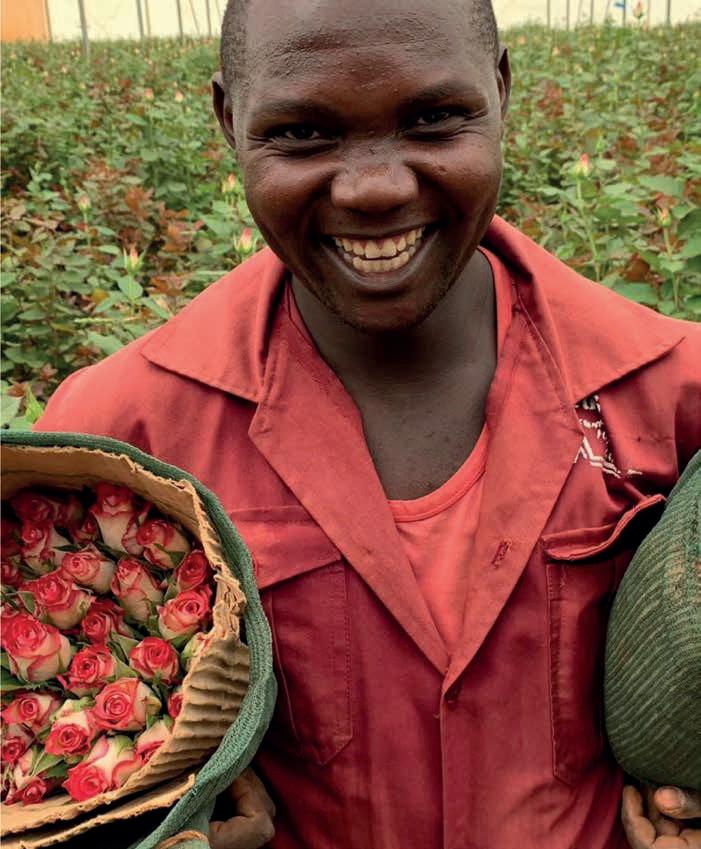
Did you know that …
Everyone in the category and purchasing department must complete relevant courses under the auspices of Ethical Trade Norway? See our course plan on etiskhandel.no and consult the Head of Sustainable Sourcing if you have any questions.
Our Ethical Guidelines for Suppliers are built around the principles of Ethical Trade Norway and the UN’s declarations. The guidelines constitute our requirements related to child labour, EHS, the right to freedom of association and the environment etc. As a help to understand the topics and requirements, a guideline has been developed in Norwegian and English.
All suppliers must adhere to our ethical guidelines and we require all suppliers to pass these on to subcontractors who are part of our supply chain.
Ethical Trade Norway is the country’s largest network of companies, organizations and public enterprises that work in a binding and systematic way to ensure sustainable supply chains. Through the membership we accept their declaration of principles and Code of Conduct. This means to ensure that human and labour rights, sustainable development and responsible environmental management are protected. As a member we report annually on our work with ethical trade. We also participate in various fora where challenges in the industry are discussed and we also take advantage of their courses and resources.
Rainforest Alliance is a certification that ensures that production meets the requirements for social conditions, environmental, agricultural and business practices. RA-certified products must also be traceable back to the producer. This certification is particularly relevant for cocoa, coffee, tea and hazelnuts.
Fairtrade is an international certification that ensure farmers and workers of primary commodities have had improved trading conditions and that the produce is grown according to standards for safe working conditions and sustainable farming.
MSC is an eco-label for fish and seafood products that guarantees that the product comes from sustainable fishing.
ASC is a certification program for responsible aquaculture. Products with the ASC label comes from aquaculture that has met the requirements of ASC’s environmental standards. The eco-label shows consumers that the seafood comes from aquaculture that has minimized the impact on the environment and society.
FSC requires that forestry operations do not lead to deforestation, that the harvesting takes place in a controlled manner, and that it takes the local population into account. The label can also be used on fibre packaging.
PEFC is an international labeling scheme for wood and paper products designed to ensure sustainable forestry. PEFC is a pure raw material label. PEFC stands for the Programme for the Endorsement of Forest Certification schemes. When something is PEFC-certified, you know that the raw material or product comes from sustainably managed forests. Management adheres to strict environmental, social, and economic criteria in accordance with PEFC’s forestry standard.
The Nordic Swan Ecolabel is the official ecolabel of the Nordic countries. The Nordic Swan Ecolabel sets environmental requirements for products in a life cycle perspective and is primarily used on hygiene and washing products, non-food and textiles.
ECC (European Chicken Commitment) is the certification REMA 1000 uses for all the chicken originating from Solvinge, Stange, and Prima. Some of the requirements to become an ECC producer include slower-growing chickens, specially designed environmental enrichments, better space, natural light in the barn, and third-party monitoring with audits.
Certifications are a risk-reducing measure, and should always be assessed on raw materials with high risk. A certification indicates a certain security that the goods are produced in a more sustainable and responsible way.

There are a number of labels that are intended to guide and inform the customer about the product’s uniqueness or character. Some have their own regulations associated with the conditions of use, others must be applied for or are linked to certification requirements and schemes for the producer.
Ø-merket (Debio) is the official Norwegian organic label and guarantees that a produce is organically grown.
The keyhole is a public label to make it easier to choose healthy foods that contain more dietary fibre and less fat, sugar and salt.
Animal Welfare Label – products labelled with the Animal Welfare Label have been produced according to criteria determined by the Animal Welfare Alliance.
NAAF (The Norwegian Asthma and Allergy Associations) label is given to producers who provide minimal risk of health nuisance. The criteria are specially tailored to avoid ailments for people with allergies, asthma and other hypersensitivity reactions.
Nyt Norge is the official label for declaration of origin for Norwegian food and drink. The label makes it easier for consumers to choose Norwegian food products in the shop.
See more labels in the Norwegian Consumer Council’s label overview.
For animal products, animal welfare must be given sufficient consideration throughout the value chain. Animal welfare should be assessed in the animal’s life cycle, from breeding to slaughter. As a minimum, national legislation and international recommendations must be followed and best practices strived for.
Animal welfare is often defined by five freedoms, and we have a dedicated animal welfare law that safeguards the rights of animals. The five freedoms are outlined in our policy for good animal welfare and are requirements that all our suppliers and partners must adhere to:

1. Freedom from hunger, thirst, and malnutrition.
2. Freedom from cold and abnormal heat.
3. Freedom from fear and stress.
4. Freedom from injury and disease.
5. Freedom to express normal behavior.
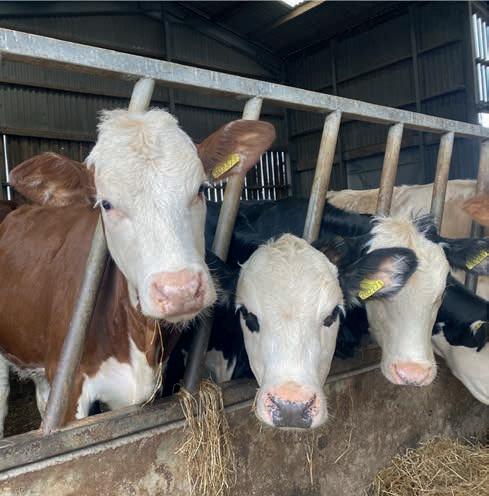
› REMA 1000 will not sell or use fur from animals bred or captured solely or mainly for the sake of the furs.
› REMA 1000 will not sell or use down from poultry that has been picked live or used in the production of foie gras and requires the same from the supplier.
› REMA 1000 will not sell or use wool from sheep that have been subjected to mulesing in our own brand and require the same from the supplier.
› REMA 1000 will not sell or use wool from Angora rabbits, and demands the same from the supplier.
› REMA 1000 will not sell or use foie gras.
› REMA 1000 will not use animal experiments in the manufacturing of its own brands on cosmetics and household products, nor commission others to do it for us. The same is required of the supplier.
› We will not sell eggs from caged hens.
› We strive to offer an increased number of eggs with the Animal Welfare Label or equivalent.
› Chicken produced under the brands Solvinge, Stange, and Prima Lavpris must be ECC certified (or have an equivalent certification that provides the same welfare level). This means, among other things, that the brands use slowgrowing breeds, lower density, environmental enrichments, LED lighting with daylight spectrum, and third-party control.
› Chicken produced in Norway under other brands should, at the earliest opportunity and no later than the end of 2024, transition to ECC certified chicken.
› REMA 1000 will phase out products containing ingredients from Ross 308 (or other fast-growing breeds) and replace them with products from ECC-approved chicken.
› Where chicken is an ingredient in domestically produced products, ECC certified chicken must be used. Exceptions may be granted in the case of raw material shortages in the market.
› Where chicken is an ingredient in imported products, efforts should be made to use ECC certified chicken or chicken with an equivalent welfare level.
› We will not import cattle from deforested areas.
› We seek suppliers that adhere to official standards that are at least as good as ours. Examples include Classy Farm, Red Tractor, etc.
› We will not sell or use products from the Belgian Blue cattle breed.
› We will not sell or use veal.
› We aim to increase the number of pork products with the Animal Welfare Label.
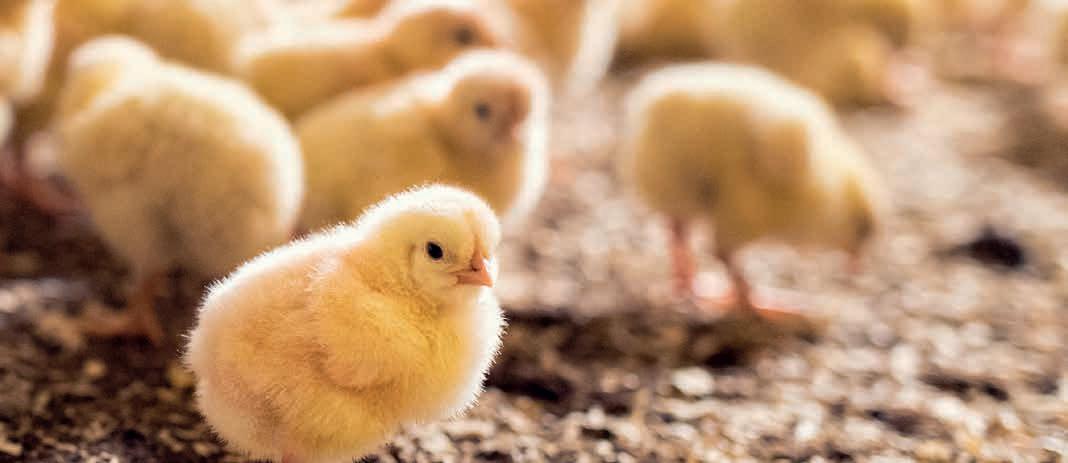
› Fish and seafood are important categories for REMA 1000. Therefore, it is crucial to implement measures that minimize the negative impacts of farming and fishing on the environment. REMA 1000 will do what we can and sets the following requirements for ourselves and our suppliers:
› No fish species from the Norwegian red list.
› No soy from areas threatened by deforestation.
› Sustainable feed ingredients.
› Certified products such as MSC for tuna and ASC for prawns.
• The Global Food Safety Initiative (GFSI): currently five different quality standards have been approved as a GFSI standard, including BRC, FSSC 2000 and IFS which are the three most common.
• British Retail Consortium (BRC): preferred standard for REMA 1000 suppliers.
• International Featured Standards (IFS)
• The Foundation Food Safety System Certification 22000 (FSSC 22000)
• Good Agricultural Practice (GLOBAL G.A.P.): international agricultural certification on farm level
• GRASP (Global Risk Assessment for Social Practice) is an assessment typically conducted as part of GLOBAL G.A.P. certification. The certification works towards ensuring safe and sustainable agricultural production for the benefit of farmers, processors, retailers, and consumers worldwide, establishing voluntary standards for the certification of agricultural products.
• Quality System in Agriculture (KSL): Norwegian agricultural certification on farm level
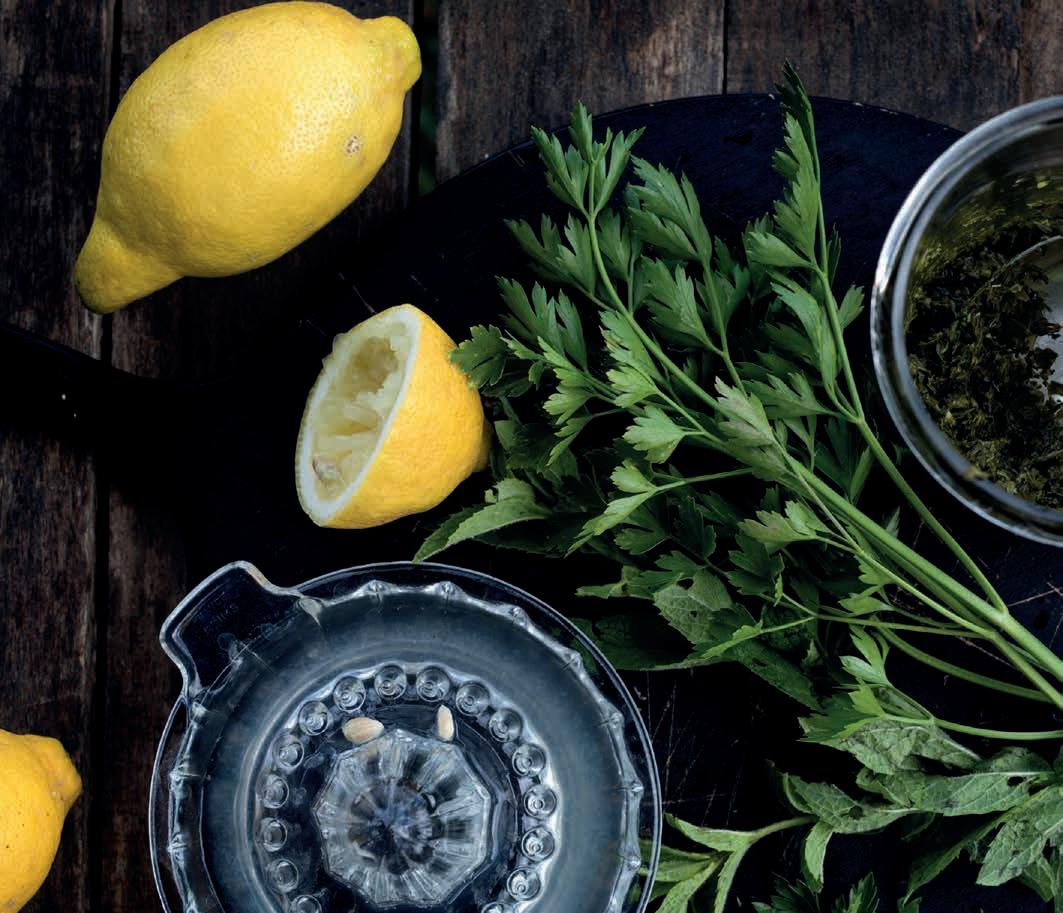
To ensure quality and food safety from farm to fork, we work purposefully across all units in our value chain.
Ensuring that all suppliers meet our quality requirements is imperative and this includes a number of certification requirements. Food producers at national and international level must be GFSI-certified, while local suppliers must, at a minimum, be registered on lokalmat. no. Additionally, KSL is revised regularly.
Suppliers can also be audited at their own expense by our third party auditing firm. Factories outside The Nordics must be members of Sedex. Read more about this under responsible and sustainable trade.
For new suppliers, the first step involves a risk assessment based on obtained documentation regarding certification A selection of suppliers is regularly audited to confirm and document that deliveries align with the agreement, as outlined in the audit plan for the current year.
It is expected that category and purchasing managers participate in at least one audit in Norway and one abroad each year. Focus should be on both quality and responsibility.
In a world where quality is becoming increasingly important and the consequences of deviations are more significant, we have several criteria in order to ensure good quality throughout our entire supply chain:
Internal controls are central and are monitored at all stages of the value chain. Our goal is for everyone handling goods to have knowledge about the required routines and controls, ensuring the production of safe products for our customers.
Product labelling and claims are strictly regulated by food legislation. The independent company Varefakta assists REMA 1000 in ensuring preparation and control in accordance with statutory requirements for own and unique products.
Varefakta is applied to all of our private label products. Varefakta creates a declaration and approves the design for REMA’s private label to ensure that the declaration, statements, and photos/illustrations align with food legislation.
Our private label products must have a transparent and honest labelling where the producer’s factory name and country of production must be stated on the packaging. Additionally, the origin of the main ingredient(s) is required to be stated.
Weight and volume control of imported goods is important as REMA 1000 is responsible for ensuring that the pre-packages meet the requirements for net content. These requirements must be communicated through the framework agreement and in some cases a signed guarantee letter from the producer. Different requirements apply to e-labelled and non-e-labelled goods from the EU and outside the EU. Physical random check to document compliance with these requirements take place during the delivery control process.
REMA 1000 will strive for as many suppliers as possible have e-marked products, as this reduces the need for control upon delivery. Questions about e-marking and controlled weighing are managed by Varefakta. It’s essential to maintain control over the suppliers of non-e-labelled products. Goods outside the EU must not be e-marked.
The duties of the first consignee on import are regulated in the agreement, and documenta-
tion of execution must take place at the first warehouse where the goods arrive in Norway. Customs handles the notification of certain goods to the Norwegian Food Safety Authority. All products with packaging that comes into contact with food must be accompanied by a declaration of conformity for the packaging, ensuring no risk of chemical substances from the packaging migrating into the food during intended storage and use. Examples of such packaging include plastic around meat pieces, bread bags and items such as pans, frying pans, cardboard plates, freezer bags and lunch boxes.
Certain products contain chemical substances that trigger specific labelling requirements for the product. This must be followed by a safety data sheet which must be available to customers at rema.no.
Cosmetics fall under food legislation and many cosmetic products contain substances that can be harmful in excessive concentrations or cause allergies. Separate regulations dictate what is allowed in cosmetic products
Products that comes into contact with skin must be registered in the European register before it is introduced to the market. Authorities carry out randomized checks to ensure that the content is within the given criteria.
Product discrepancies that are detected internally or through customer complaints must be registered and measures must be established to prevent and/or reduce the risk of recurrence. ServiceNow has been selected as the deviation/complaint handling system in REMA 1000.
Olive oil
Juice
Coffee and Tea
Spices
Parmesan and Mozzarella
Rice
Seafood
Organic products
Meat and meat products
Honey
Food fraud involves fraudulent activities with food for financial gain. Examples include replacing a primary commodity with a cheaper alternative, diluting or falsifying labelling and labels. Expensive products and primary commodities are often most exposed to fraud.
Organic products are particularly susceptible to tampering, making it extra important for us to have good control over this product category. REMA 1000’s requirement that producers must be GFSI certified reduces the risk of food fraud, as GFSI standards have strict requirements, including the integration of vulnerability analyses related to food fraud into ongoing quality work in the production business.
The prevalence of food fraud is increasing, and we closely monitor risk-exposed products and primary commodities through random sampling and additional follow-ups with suppliers and producers.

The EU is in the process of implementing an «EU taxonomy», which will legislate specific criteria for defining sustainable activities. This also applies to Norway through the EEA agreement. This initiative will contribute to enhancing companies’ environmental and climate efforts, particularly.

Food production is responsible for approximately 30% of global emissions and consumes a significant share of natural resources and land. Our aim is to minimize this negative impact and we expect our suppliers not only to comply with relevant environmental legislation but also to actively reduce their adverse effects. Furthermore, we encourage our suppliers to reduce their greenhouse gas emissions and reduce the use of water and energy. We also want them to recycle waste, reuse excess materials from production and communicate the requirements to their subcontractors.
Read more about this and other requirements in our ethical guidelines.
In addition to efforts aimed at making the goods we sell more sustainable, we are actively working to reduce emissions within our own business, improve the environmental efficiency of our distribution, and develop energy-efficient buildings and stores. These measures have yielded significant results, and in just a few years, we have successfully halved our emissions, earning recognition as one of the world’s leading companies in climate management.
In REMA 1000, we wish to make it easy for the customer to make smart and good choices. We are therefore increasing the range of certified and organic products, influencing suppliers to phase out palm oil, working for more environmentally friendly packaging and mapping the products’ environmental impact from farm to table.
We can greatly affect the environment through the value chain, but ultimately it is the products we sell that affect the environment the most. One of the most important steps we can take as a grocery chain is to establish requirements for the groceries we sell. Consequently, our goal is to offer a good selection of quality groceries that are produced and sold in a responsible manner.
Ole Robert Reitan, Administrerende direktør i REITAN RETAIL AS
climate change is the biggest challenge of our time and according to the UN, drastic measures are needed to limit warming to 1,5 degrees? For us at REMA 1000 it is easy; we will be a part of the solution and do more than what is expected of us.

Plastic waste is one of the most significant environmental challenges globally. Therefore, we actively choose to be a part of the solution by making conscientious choices regarding plastic usage and packaging.
It is important to us that the initiatives we implement have a positive impact on the environment at every stage – from production and shipping to the product’s life beyond the store shelf. Our goal is to exclusively utilize sustainable packaging in the future, a goal we are actively pursuing. To achieve this, we will reduce where possible, incorporate more recycled materials to enable resource reuse, and ensure ease of recycling. Additionally, we will explore alternative sustainable materials, including fossil-free plastics when feasible.
a sustainable packaging is defined as being made from recycled materials and designed to be recycled for further use? To promote more sustainable packaging practices, the EU has set a target for 50% of plastic to be recyclable by 2025. Norway, at a minimum, will align with this goal through the EEA agreement.
By minimizing excess plastic and other materials, we achieve efficient transport, optimize resource utilization, and decrease the likelihood of plastic ending up in nature. Therefore, our strategy is to reduce wherever possible, without compromising quality, food safety, or increasing the risk of food waste.
Plastic is a recyclable material that plays an important role in the circular economy. Increasing the use of recycled material allows us to tap into existing resources, rather than producing new plastic every time we package a product.
To ensure that plastic can be efficiently recycled after use, it is important to choose plastic materials suitable for recycling. Our goal is that all our private label products will feature clear labelling, making it easy to correctly sort the packaging. This applies not only to products packaged in plastic but also to packaging made of or containing other materials.
Packaging serves the purpose of ensuring food safety, quality, and shelf life. We must always consider these factors when evaluating packaging solutions. For instance, an unpackaged cucumber may have a shelf life of only a couple of days compared to 10 days when packaged.
A life cycle analysis of cucumbers with and without packaging doubles the cucumber’s shelf life?
Testing new packaging technologies is one of several measures we are taking to reduce the environmental impact of packaging. Plastic is primarily derived from fossil sources, such as oil and gas, but there are also alternatives made from renewable raw materials. An example of this is ‘green plastic,’ produced from sources like sugar cane or corn. While its appearance is quite similar, this bioplastic has the same protective properties as fossil plastic. The advantage of such bioplastics lies in their recyclability, as they can be sorted together with regular plastic, in contrast to compostable bioplastics.
The customer should experience that the packaging ensures the product’s quality and durability, is user-friendly, and easy to recycle.
Environmental impact is ensured through the choice of material, size, and quality of the packaging. The store should be provided with costeffective and sales-friendly packaging.
Distribution should ensure an optimal flow of goods throughout the value chain, with the D-pack adapted for automatic picking stock.
The role of packaging is to ensure the product’s quality from production to the customer’s refrigerator. Ensuring food safety is central and the packaging must withstand transport, handling in the store and at the customer’s home. Food waste is minimized through the correct packaging size, supplementary expiration date («often good after») and opening/closing functions where appropriate.
The packaging should be designed for a positive customer experience, proper waste management, and recycling. Renewable or recycled materials have lower emissions and environmental impact compared to virgin materials made from fossil resources. The packaging must be recyclable, allowing the material to be reused. Consideration should be given to the label and color of the plastic packaging to ensure its recyclability. Black color (Carbon Black) on plastic packaging hinders material recycling and should be avoided.
A high filling degree is both cost-effective and environmentally efficient. Air or modified atmosphere in the packaging should be minimized without compromising the product’s shelf life. The packaging size should be adapted to the size of the product.
Customers should be able to read the content and other relevant information on the package. Barcodes must be readable in the cash register, placed on a flat surface, and in a similar location as products in the same category. Date markings should be easy to read, and supplementary date marking, such as “best before, often good after,” on groceries with a best-before date, helps reduce food waste.
Waste symbols, often supplemented with our own eco-labels, guide “good recycling” practices. When using fiber packaging, we strive for approval in accordance with FSC standards, ensuring environmentally friendly packaging.

In addition to the use of national waste symbols, REMA 1000 has developed its own series of ecolabels. These labels are available for use on products where we have reduced plastic, increased the content of recycled material, or made the packaging easier to recycle. This initiative aims to simplify the customer’s search for products that contribute to a smaller environmental footprint.
Labels and glue should be of high quality to withstand handling during distribution and in the shop. The label should be made of the same material as the packaging to ensure material recycling and readability throughout the product’s lifespan.
Retail packaging must ensure safe and optimal transport of products through the value chain and be designed for effective in-shop exposure. An optimal pallet size is 120 x 80 x 120 cm, including the pallet, with a minimum of 90% volume utilization required. For more information, refer to STAND.no.
Familiarize yourself with our action rules for packaging and feel free to use the tool that has been developed to ensure quality and assess packaging solutions.
GLOSSARY
Term Description
Declaration of conformity All products with packaging that comes into direct contact with food must be accompanied by a declaration of conformity.
EK-certificate The EK-certificate certified by Embalasjekonvensjonen is based on regulations on materials and objects in contact with food and drinks.
Bio-based plastic Plastic raw material made from biomass such as vegetable oils, corn starch or sugarcane.
Fossil-free plastic Used as a collective term for plastic raw materials that come from renewable raw materials (bio-based) or recycled plastic raw materials.
Biodegradable plastic Refers to plastic that can decompose under specific conditions and processes. Can be either bio-based or derived from fossil fuel sources.
Material recycling Recycling where the waste is used to produce secondary raw material and objects.
Circular economy A circular economy is based on reduced consumption of raw materials, reuse, repair and material recycling in a cycle where as few resources as possible are lost.
Design for recycling Checkpoints in product and packaging development that will ensure that used packaging is easily sorted and recycled into new raw materials.
FSC Certification that ensures that timber and wood fibre used in packaging comes from responsible sources.
In REMA 1000 we have our own resource person for packaging. Contact Emilie Våge (emilie.vage@rema.no) for questions, assistance and more information about our action rules.
Did you know that …
companies selling packaged products are obligated to actively work towards waste prevention and the recycling of used packaging?
Food waste is a significant societal problem, impacting the economy, climate, and environment, as well as the global distribution of resources. Globally, one third of the edible food produced is discarded.
In REMA 1000, our ambition is to be a driving force in the fight against food waste. We have signed an industry agreement to halve food waste by 2030. Our ambition is to achieve this goal well ahead of time.
In 2017, the authorities and a unified food industry entered into a historic cooperation agreement to reduce food waste in Norway by half by 2030. Aligned with the UN’s sustainability goals, the agreement aims to:
• Enhance resource and primary commodity utilization by preventing and reducing food waste.
• Increase understanding of the extent and causes of food waste through the exchange of experiences and collaboration across the food chain.
• Foster better knowledge and attitudes among consumers and the food industry to preserve food effectively and reduce waste. The parties aim to facilitate improved knowledge, attitudes, and consumer behavior that minimize food waste in households.
An integral part of our efforts to reduce food waste involves initiatives aimed at encouraging customers to minimize their discard. On average, around 454,000 tonnes of food are wasted in Norway annually, with approximately half of this occurring in households. This amounts to about 42 kilograms of food per inhabitant each year.
Implementing packaging sizes tailored to smaller households, utilizing packaging that effectively preserves food, and incorporating additional labels such as Keep-it and ‘often good after’ are effective initiatives to assist customers in reducing food waste.
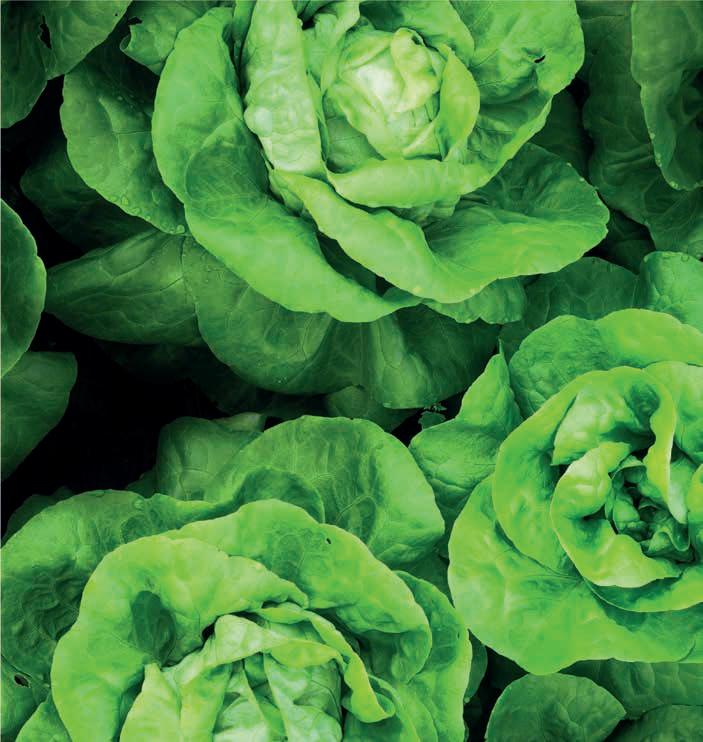
An important part of the industry agreement is that we will contribute to less food waste in thousands of homes. Surveys show that many of us do not trust the date stamp and that this is one of the biggest reasons why we throw away food. With Keepit and “often good after”, we offer our customers knowledge of the actual durability of the product, so that they avoid the uncertainty surrounding the date stamp. The result is less food waste and a better customer experience.
The battle against food waste commences with robust ordering and rotation practices. Ensuring our customers receive good, high-quality food is paramount. We prioritize effective routines that guarantee the quality and longevity of groceries throughout the entire value chain.
All our shops reduce the prices of items nearing their expiration date. These groceries are clearly marked and have dedicated spots in the chilled section, making it convenient for customers to make both economically and environmentally conscious purchases. Since the inception of this initiative, we’ve observed a significant reduction in food waste, especially for items like meat, fish, dairy, and ready meals.
One prevalent reason for discarding food is uncertainty about the expiration date. REMA 1000 is the only grocery chain offering a shelflife label indicating the actual shelf life. We have labelled over 80 million fresh products with the Keep-it® shelf-life indicator since 2012, which tracks product temperature over time.
In 2018, we introduced the additional label «best before, often good after». This label applies to all our own-store brand products with a best-before date, except for baby and pet food, where customers prioritize quality and safety.
Under the PRIMA store brand, we offer fruits and vegetables with lowered requirements for factors like size, shape, and sweetness. This initiative minimizes food waste at the primary stage and allows us to sell differently sorted produce at an extra-low price.
Donating edible food that cannot be sold for various reasons is an important measure to reduce food waste. Since 2013, we have partnered with Matsentralen, which collects food for the disadvantaged. Many merchants contribute edible food to local charities. Additionally, some shops and producers have agreements with local farmers who use food waste for animal feed. Specialists in recycling and treating food waste collect discarded food, making it available for purposes such as biogas production. gas.
Every second, vast expanses of rainforest vanish in various locations worldwide to make way for cattle ranching, palm oil, and soy production.
The rainforest is essential for the Earth’s ecosystem, and deforestation contributes significantly to greenhouse gas emissions, leading to climate changes both locally and globally.
Preserving the rainforest holds great importance for REMA 1000. In 2014, we eliminated palm oil as an ingredient from all our private label food products and refrained from incorporating palm oil in any new products. Moreover, we insist on the certification of soy usage and actively explore alternative solutions to reduce soy consumption.
• None of our private label food products will contain palm oil.
• In non-food the minimum requirement for use is certification at RSPO Mass Balance level, with the aim of phasing out as soon as possible.
• We decline all new product offers that contain palm oil.
• We want all suppliers to reduce their consumption of palm oil. If used, the oil have to be certified and traceable.
• Preferably, soy from countries where there is no danger of deforestation in areas generally accepted as rainforest should be used
• All other soy, including that in feed, must be certified according to ProTerra, RTRS or equivalent environmental certification.
• Furthermore, we want our suppliers to look into alternatives for soy and eventually find substitutes that can replace the current use of soy.
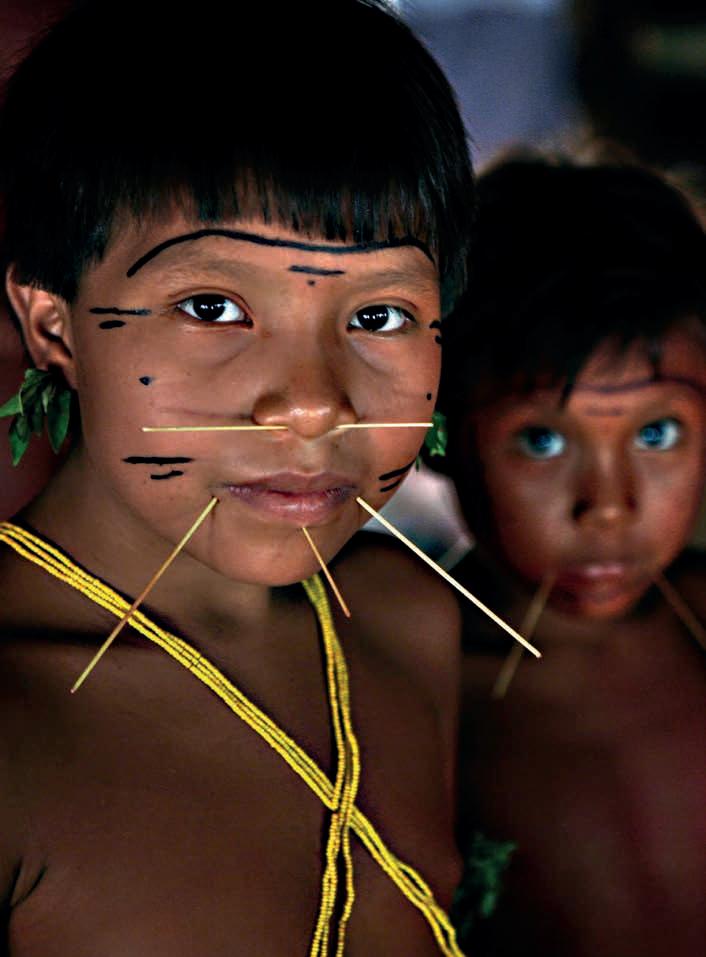
Did you
know that … that the rainforest is over 50 million years old? Within the last fifty years, 50% of the rainforest has been destroyed. Without halting deforestation now, the rainforest could be completely destroyed within the next 25 years.
REMA 1000 is an important supporter of the Rainforest Foundation. Their demands for value chains and suppliers that take responsibility for the environment and rainforest will have significant importance in the years to come.
Tøris Jæger, General Secretary of Rainforest Foundation
The use of chemical substances in items and packaging has increased in recent decades, contributing to enhanced product quality in many cases. However, this rise also entails potential exposure of humans and the environment to environmental toxins and other hazardous substances. Some chemical substances pose such significant threats to health and the environment that we label them as environmental toxins, and our goal is to discontinue their use and emissions.
Environmental authorities maintain an extensive list of chemical substances they aim to eliminate from the market
Many of our products currently contain these substances, and we are actively working to replace them with better and more environmentally friendly alternatives in our private label products. We also seek to influence our suppliers to do the same.
As a minimum requirement, the packaging of our private label products must be free from PFOA/ PFOS/PFCA, phthalates (DEHP), and Bisphenol A. Additionally, our products cannot contain Methylisothiazolinone (MI).
Perfluorinated substances such as PFOA/PFOS/PFCA are used to provide water and dirt repellent properties to products. Examples include baking and food wrapping paper, muffin tins, and the non-stick surfaces of frying pans and cookware.
Bisphenol A is used as a raw material for plastic, paint, and in imported plastic products. Examples of products containing it include lunch boxes, plastic drinking bottles, and receipts.
Phthalates (DEHP) are often used in plastic production and the plastic coating of the lids of canned glass products.
Methylisothiazolinone (MI) is commonly found in cosmetics, hygiene products, and other body care products. It is also present in liquid cleaning products.
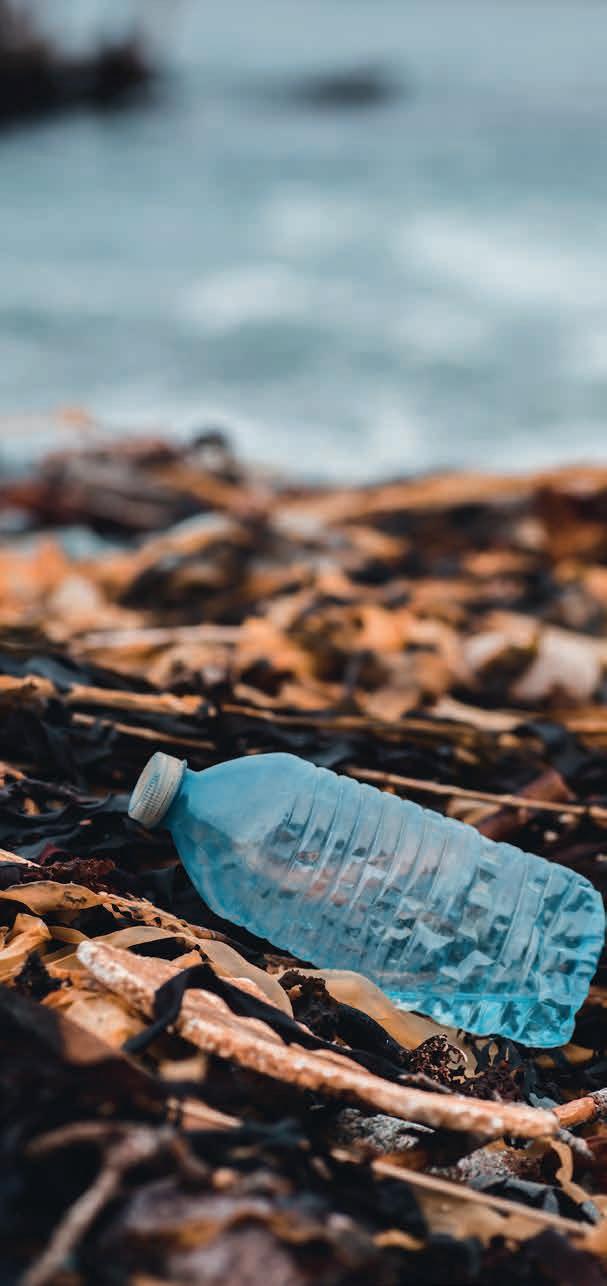
Fish and seafood are important categories for REMA 1000. Therefore, it is essential to make efforts that contribute to minimizing the negative effects of fish farming and commercial fishing on nature. We aim to do our part and set requirements for both ourselves and our suppliers, ensuring:
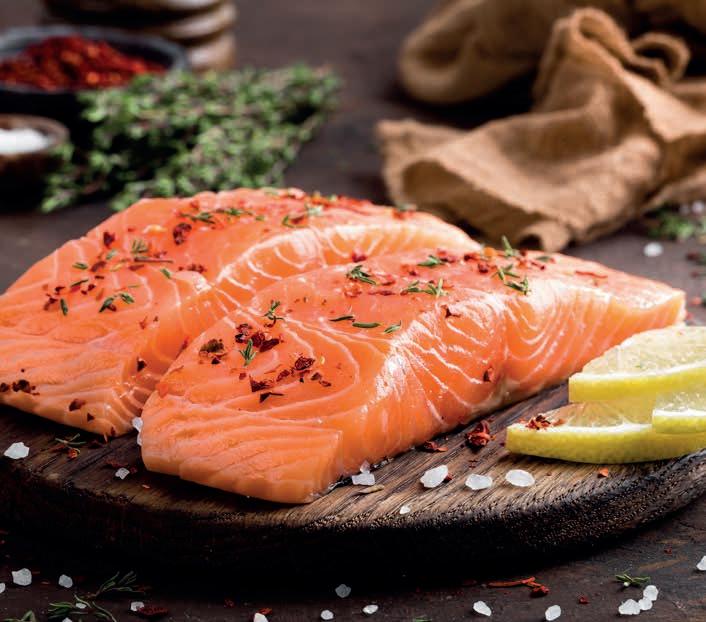
We have chosen not to sell fish species listed on the Norwegian red list. One restricted species is redfish, with all direct fishing prohibited. However, REMA 1000 allows redfish to be sold if caught incidentally while fishing for other species. We believe it is irresponsible not to utilize good produce and valuable protein sources when the alternative is discarding the fish. To prioritize seasonal availability and responsibly offer all fish species landed by coastal fishermen, one of our goals is to focus more on wild-caught fish.
We require our suppliers to use sustainable raw materials in their feed. For marine commodities, compliance with IFFO RS (International Fish Meal and Fish Oil Responsible Supply Standard), MSC certification, or equivalent standards ensuring sustainable fisheries is mandatory.
Preserving the rainforest is important to us. Regarding soy in feed, we mandate that sustainable commodities must be certified under ProTerra, RTRS, or equivalent environmental certifications. Preservation of the rainforest is important to us, and when it comes to soy in feed, we require that the sustainable commodities are certified under ProTerra, RTRS or equivalent environmental certification. This ensures that the prime commoditiy is not grown in areas that are threatened by deforestation. Furthermore, we wish that our suppliers look at alternatives to soy and find new protein commodities that can replace this together with their subcontractors
We prioritize the sustainability of tuna stocks and exclusively use ‘Skipjack’ tuna in our private label products. Skipjack is recognized as one of the most sustainable tuna varieties
• No fish species from the Norwegian red list
• Sustainable feed
• No soy from areas threatened by deforestation
• Sustainable tuna
• Increased use of certifications such as ASC and MSC
Read more about the requirements on rema.no
Did you know that … the world’s wild fish stocks are predicted to collapse by 2050 without measures to minimize the negative impact?
due to its rapid reproduction, making it less susceptible to overfishing compared to other varieties.
MSC is an environmental certification exclusively awarded to fisheries practicing sustainable fishing. If a seafood product bears this label, it signifies that the fishery meets specific criteria aimed at preserving fish stocks for the future and protecting the marine environment. In 2018, we made the decision to certify our two primary varieties of canned tuna with the MSC label. This certification ensures that the tuna originates from sustainable stocks. The products were made available in all our stores in 2019. Additionally, in 2018, we introduced fresh certified tuna. Since 2015, we have offered certified scampi. The ASC certification guarantees that the seafood comes from aquaculture with minimal negative impacts on the environment and society.

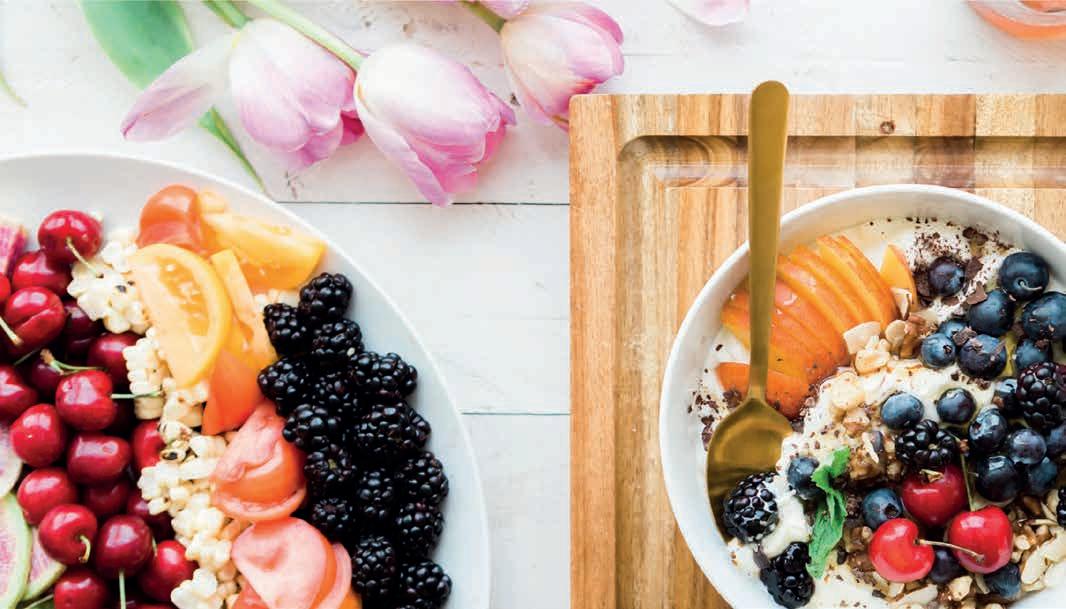
Through our work to reduce salt, sugar and saturated fat as well as offering healthier products, we contribute to UN’s sustainability goals 2 and 3.
REMA 1000 aims to facilitate better choices for Norwegian consumers, making it easier to maintain a healthy and varied diet in their day-to-day lives.
This involves reducing salt, sugar, and saturated fat content in our private label products, investing in healthy categories and establishing requirements for our suppliers. While we will continue to offer beef and chocolate, our aim is to inspire customers to include more healthy alternatives in their shopping baskets.
REMA 1000 HAS SIGNED THE LETTER OF INTENTION FOR A HEALTHIER DIET
The letter of intent on facilitating a healthier diet is an agreement between the Norwegian health authorities and the food industry. The agreement was established in 2016, and sets specific targets for reducing salt, added sugar, and saturated fat consumption. It also aims to increase the intake of fruits, berries, vegetables, whole grains, fish, and seafood in the population. In 2021, REMA 1000 reaffirmed its commitment to these goals by signing the agreement for an additional four years. The new agreement lasts from
1.1.2022 to 31.12.2025. For REMA 1000, this commitment translates into actively reducing salt, sugar, and saturated fat in our private label products. In 2016, we successfully lowered the salt content by 30%, and we continue to work towards achieving other objectives outlined in the agreement. Additionally, we are dedicated to promoting healthy alternatives and fostering innovation, reformulation, and packaging sizes that contribute to a healthier diet for the Norwegian people. The new agreement stipulates the following expectations for companies within the food and beverage industry:
1. Facilitate easier access for consumers to adopt a healthier diet through innovation, reformulation, portion and packing sizes, development of new products as well as by promoting healthier alternatives that align with the objectives of the letter of intent.
2. Provide regular reports to the coordination group using the agreed-upon format, focusing on the relevant areas outlined in the agreement.
3. Contribute to the widest possible support of the letter of intent.
4. Contribute to the evaluation of the letter of intent.
This agreement between the authorities and the food industry has the potential to significantly contribute to achieving national goals in public health policy:
• Norway aims to be among the top three countries globally with the highest life expectancy.
• The population will experience several years of good health and well-being, along with a reduction in social health inequalities.
• Efforts will be made to establish a society that fosters health throughout the entire population.
despite several positive developments in recent years, the Norwegian diet still exhibits clear nutritional deficiencies? Excessive intake of salt, sugar and saturated fat increases the risk of developing diseases, such as cancer, cardiovascular disease and type 2 diabetes.
The goals outlined in the letter of intent aim to encourage the population to consume more of the foods recommended by the Norwegian Directorate of Health. This involves adopting a balanced diet rich in fruits, berries, whole grains, and fish, while limiting the intake of meat, red meat, salt, and sugar.
1. Reduction of the salt content in food and reduction of salt intake in the population. The average daily intake is targeted to decrease from 10 g in 2010 to 7 g in 2025, with the long-term goal of reducing the intake to 5 g per day.
2. Reduction of added sugar in food and reduction of the population’s intake of added sugar. The goal is for the population’s intake of added sugar to be reduced to 10% of kcal intake by 2025, indicating a 17% reduction.
3. Reduction of saturated fat in food and reduction of the population’s intake of saturated fat. The long-term goal is 13% kcal intake by 2025.
the Norwegian Directorate of Health is the authority behind the Keyhole label, and the criteria for its use are regulated by its own regulations?
Norway imposes stricter requirements for the total absence of GMOs in products compared to the EU. The use of GMO primary commodities in food or feed products is not permitted. Producers must provide documentation to verify compliance, and both authorities and REMA 1000 will conduct random checks. Declarations from producers with primary commodities at risk must also be obtained.
4. Increase the population’s intake of fruit and berries, vegetables, whole grains and seafood by 20 % in line with the National Action Plan for a Better Diet 2022-2025. The long term goal is for the population to have an intake of above mentioned foods in accordance with the dietary guidelines.
5. Influencing consumer behaviour to contribute to health and diet awareness. The goal for the Keyhole label is to increase sales of keyhole products measured in volume, with a target of 21% by 2025.
6. Annual reporting that provides better knowledge about development and measures.
Food additives are substances added to food to extend shelf life, replace sugar, provide a specific taste, texture, or color. Ingredients such as vinegar, salt, sugar, and spices are not considered food additives.
Our policy is that flavor enhancers E620 – E629 should not be used. Additionally, there is an appeal for the restricted use of food additives. REMA 1000 is also working to reduce the use of other food additives, and some may be added to the list of restricted items. There is also a call for restricted use of smoke flavor.
E 407 Carrageenan must be phased out in existing PL products by the end of 2023. From 2023, no new products with Carrageenan will be launched unless strictly necessary, and must be approved as an exception by REMA 1000 if there are no alternatives. There are no exceptions for the use of carrageenan in organic products.
Titanium dioxide must be phased out in all existing PL non-food products by the end of 2023. From 2023, no new nonfood products with titanium dioxide will be launched unless it is strictly necessary, and it must be approved as an exception by REMA 1000 if there are no alternatives.
REMA 1000 strives to increase the percentage of products carrying the Keyhole label. This initiative facilitates healthier choices for customers, as products with the Keyhole label contain more fiber and less saturated fat, sugar, and salt. Specific criteria for these nutrients have been established within each food group. Our approach is to integrate the Keyhole label into our private label products wherever feasible.

GMO stands for genetically modified organism? Genetically modified food is food that consists of, contain or that has been produced with the help of plants, animals or bacteria whose genetic material has been altered using modern technology.
FOR QUESTIONS, FEEDBACK, OR MORE INFORMATION, PLEASE CONTACT:
Emilie Våge, Head of Social Responsibility and Sustainability, emilie.vage@rema.no
Christina Fuglesang, Head of Responsible Sourcing, christina.fuglesang@rema.no